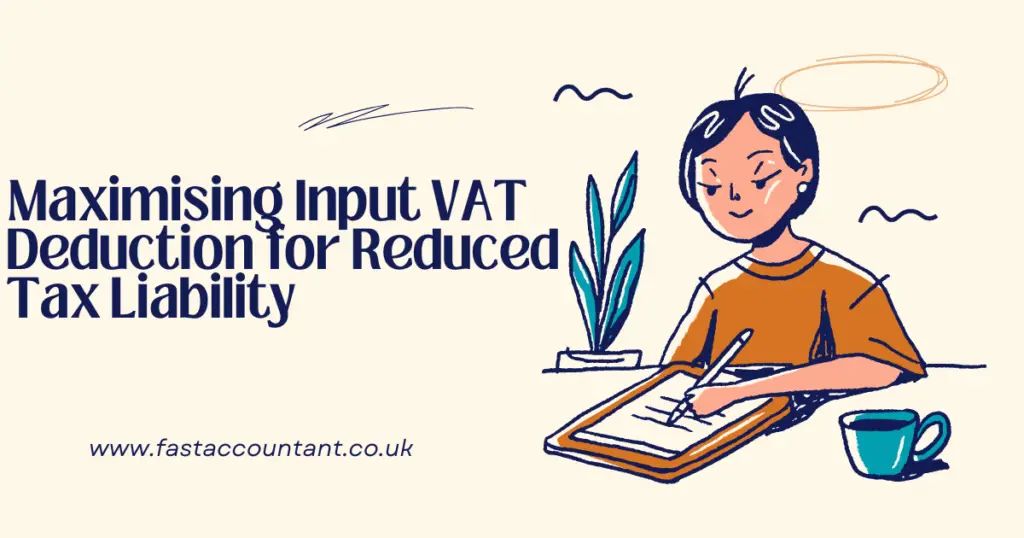
In the world of taxes, Value Added Tax (VAT) plays a crucial role in many countries’ revenue systems. As a business owner, understanding the concepts of input VAT and output VAT can greatly impact your tax liabilities and cash flow management. Input VAT is the tax you pay on your business purchases, while output VAT is charged on the sale of your goods and services. By maximizing your input VAT deduction, you can reduce your overall tax liability and keep your cash flow healthy. By taking the time to calculate and understand these taxes, you can ensure compliance, better control your costs, and gain a competitive edge in the market.
Understanding the Basics of VAT
Before we get into the nitty-gritty of input VAT deduction, let’s make sure we’re on the same page about what VAT is all about. Value Added Tax (VAT) is a consumption tax that is levied on the purchase price of goods and services at each stage of the supply chain. Businesses are responsible for collecting and remitting VAT to tax authorities.
VAT is a significant component of many countries’ tax systems, and understanding how it works is crucial for maintaining compliance and managing your finances effectively.
Input VAT and Output VAT Explained
Now that we’ve got the basics covered, let’s talk about the key concepts of input VAT and output VAT. Input VAT is the tax paid by a business on its purchases of goods and services. On the other hand, output VAT is the tax that a business collects on the sale of its goods and services. By deducting the input VAT paid on purchases from the output VAT collected on sales, businesses can reduce their overall tax liability.
Importance of Input VAT Deduction
Input VAT deduction is a powerful tool for businesses to lower their tax burden and maintain healthy cash flow. By maximizing input VAT deduction, you can effectively reduce the amount of VAT you owe to the tax authorities, freeing up more capital to reinvest in your business.
Additionally, proper input VAT deduction ensures that you are not paying more in taxes than necessary, allowing you to stay competitive in the market and improve your bottom line.
Calculating Input and Output VAT
Calculating input and output VAT involves a few key steps, including gathering invoices, verifying information, and adding up VAT amounts. To calculate input VAT, you’ll need to review all your purchase invoices and identify the VAT amount paid on each transaction.
For output VAT, you’ll need to look at your sales invoices and determine the VAT amount charged to your customers. By subtracting the total input VAT from the total output VAT, you can arrive at your net VAT liability.
Strategies for Maximizing Input VAT Deduction
Now that you understand the importance of input VAT deduction, let’s discuss some strategies for maximizing this tax benefit and reducing your overall tax liability.
Keep Detailed and Accurate Records
One of the most critical steps in maximizing input VAT deduction is keeping detailed and accurate records of all your transactions. Make sure to organize your invoices and receipts in a way that is easy to access and review.
By having a systematic record-keeping process in place, you can ensure that you capture all the input VAT that you are entitled to deduct, ultimately reducing your tax liability.
Review VAT Invoices Carefully
When reviewing your VAT invoices, pay close attention to the VAT amount charged on each transaction. Make sure that the VAT rate applied is correct and that all necessary information is included on the invoice.
By verifying the accuracy of your VAT invoices, you can avoid potential errors that could lead to under or over-claiming input VAT deductions.
Claim Input VAT on all Eligible Expenses
It’s essential to remember that you can only claim input VAT on purchases that are directly related to your business activities. Make sure to review all your expenses and identify those that are eligible for input VAT deduction.
Whether it’s office supplies, equipment purchases, or professional services, be diligent in claiming input VAT on all eligible expenses to maximize your tax benefits.
Consider VAT Grouping
If you have multiple business entities within your organization, you may benefit from VAT grouping. VAT grouping allows related companies to be treated as a single entity for VAT purposes, which can result in significant tax savings.
By consolidating your VAT obligations through grouping, you can streamline your VAT reporting and maximize input VAT deduction across all entities within the group.
Seek Professional Advice
Navigating the complex world of VAT regulations can be challenging, so don’t hesitate to seek professional advice from a tax expert or accountant. A knowledgeable professional can help you optimize your input VAT deduction and ensure compliance with VAT laws.
By consulting with a tax advisor, you can gain valuable insights into maximizing your VAT benefits and reducing your overall tax liability.
Conclusion
Congratulations on making it to the end of this guide! You now have a solid understanding of how to maximize input VAT deduction to reduce your tax liability and improve cash flow for your business.
By implementing the strategies outlined in this article, you can take control of your VAT obligations and ensure that you are not paying more in taxes than necessary. Remember, proper record-keeping, careful review of VAT invoices, and claiming input VAT on all eligible expenses are key to maximizing your tax benefits.
If you have any questions or need further assistance, don’t hesitate to reach out to a tax professional for guidance. Here’s to optimizing your input VAT deduction and achieving financial success!
